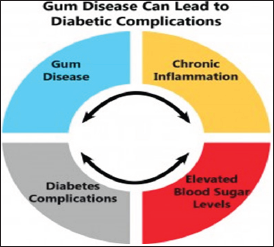Lupine Publishers| Journal of Dentistry and Oral Medicine
Editorial
Preventive Dentistry
The mouth is essential for eating, drinking, speaking, and communicating, for tasting, breathing and the immune system. It is a window enlightening the health of the body. It can elucidate signs of nutritional deficiencies or general infection. Regular dental examinations and adapted oral hygiene visits contribute to oral health. Dental cares by brushing the teeth twice a day with fluoride toothpaste, is associated with the replacement of the toothbrush every three or four months combined with the ingestion of a balanced diet. A regular check-up keep the smile and contribute to a good oral health. More than brushing and flossing, dental health is maintained by oral cares.
Figure 1:

Products available to consumers for over-the-counter (OTC) sale includes toothpastes, toothbrushes, mouth rinses, interdental cleaning aids (dental floss), saliva substitutes, and other hygiene basics products. Doing so, it is possible to eat and speak properly and prevent diseases. Such dentistry helps keeping a healthy mouth. Daily brush and floss contribute to the prevention of dental diseases. In addition, at least an annual visit to the dentist and the food intake of a balanced diet prevent carious cavities, gingivitis, enamel loss and periodontitis. Therefore, preventive dentistry is a major aspect of dental cares (Figure 1).
Adults
Dental and oral health care's are crucial for young and old patients. They keep clean enamel surfaces, non-inflammatory gingival gum, and avoid dental plaque and calculus deposition (tartar) around teeth. Supra- and sub- gingival calculus tartar can cause gum disease. Calculus removal and sub gingival scaling are effective, with or without periodontal flap surgery. Dental prophylaxis contributes to dental hygiene and prevention. Pocket depth initiates periodontal lesions. Pockets less than 3mm are the easiest sites for scaling and root planning, whereas pockets depths between 3 and 5 mm are more difficult to scale. Pockets more that 5mm increase surgical difficulties. Removal of soft plaque, sticky and bacteria infested film, and tartar play critical roles in gingival prevention without surgical scaling, cleaning, or polishing. Ultrasonic teeth cleaning (scaling) and root planning constitute an effective alternative to manual scaling. It allows the gum tissue to heal and reattach to the tooth. Teeth whitening constitute a preliminary option, before tartar formation. An effective alternative scaling follows it. Brushing and flossing cannot remove tartar but prevent tartar accumulation.
Geriatric Oral Health Care
Older adults (65 years of age and older) are vulnerable to medication errors, drug interactions or adverse drug reactions. Dental conditions associated with aging include dry mouth (xerostomia), root and coronal caries, and periodontitis. The most occurring conditions are hypertension (71%), arthritis (49%), heart disease (31%), cancer (25%) and diabetes (21%). Hearing loss, cataracts and refractive errors, back and neck pain and osteoarthritis, chronic pulmonary disease, diabetes, depression, and dementia have been also identified. Osteoarthritis limits the patient mobility, macular degeneration, cataracts, glaucoma, or diabetic retinopathy, hearing loss. Inappropriate drug use, medication errors, drug interactions or adverse drug reactions are listed in the diseases disturbing old patients. Medication- related mechanisms are implicated in xerostomia and salivary gland dysfunction in older adults. This includes anticholinergic/ sympathomimetic effects, topical effects of inhaled medications, dehydration (e.g., from diuretics), salivary glands vasoconstriction, and changes in salivary composition.
Patients With Visual Loss
Age-related visual impairment, such as cataracts, glaucoma or presbyopia, may diminish a person's ability to process nonverbal conversational cues that frequently are communicated visually. Help ensure patients, which can clearly see demonstrations and read written materials, including appointment cards and instructions. The following tools and strategies can assist visually impaired older adults in the dental office. Patients with physical limitations/ loss of mobility: Osteoarthritis or rheumatoid arthritis in the hand, fingers, elbow, shoulder, and/or neck can affect a person's ability to maintain good quality home oral care. Modification of manual toothbrush handles or the use of an electronic toothbrush with a wide, grippable handle can help accommodate for lost mobility Floss holders or interdental cleaners/brushes can aid in cleaning between teeth. Increasing the frequency of dental cleanings and examinations can help to promote optimal maintenance of oral hygiene.
i. About 75 percent of people ages 60+ have only some of their natural teeth.
ii. Nearly 23 percent of adults ages 65-74 have severe gum disease.
iii. Dry mouth (reduction in saliva production), often caused by prescription and over-the-counter medications, is a problem for 30 percent of older adults. It contributes to significant tooth decay and gum disease.
Among the factors influencing the occurrence of dry mouth, frequently it is a side effect of medications. Many prescription drugs-many of them used for common conditions such as high blood pressure, depression, allergies, and pain-are known to cause dry mouth. Moreover, the more drugs are absorbed by old patients, the more likely trouble will be induced by dry mouth. Over-the- counter medications, antihistamines, and decongestants can also be the cause, along with chemotherapy, radiation therapy, and illnesses such as diabetes, Parkinson's, and Sjogren's Syndrome. Modern Approaches in Dentistry and Oral Health Care lead to preventive therapies in young and old patients.
Read More About Lupine Publishers Journal of Dentistry and Oral medicine Please Click on Below Link https://lupine-dentistry-oral-health-care.blogspot.com/

No comments:
Post a Comment
Note: only a member of this blog may post a comment.